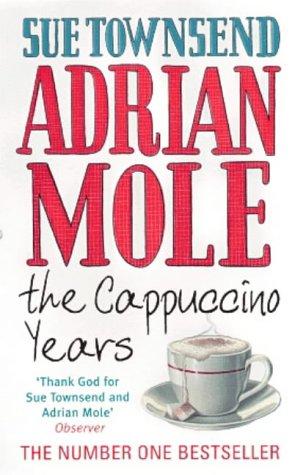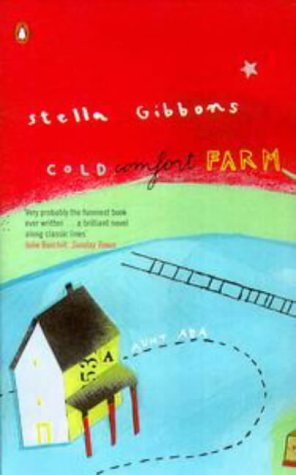Anyone who knows me knows that I'm not much of a socialist, but as you will know if you read
my recent review of Cold Comfort Farm, I am a feverish bargain hunter and will always do my level best to track down whatever I want for the lowest possible price, whether it's a new piece of gadgetry, a normally ridiculously expensive eyeshadow quartet, or an out-of-print book.
I've had dealings with the out-of-print market before: once when trying to track down a triad of books that I loved as a child (
Dresses of Red and Gold,
All In The Blue Unclouded Weather, and
The Sky in Silver Lace, all by Robin Klein),

and once when I found a quotation from a Ted Hughes book online that would have helped desperately with my undergraduate dissertation had it not been out of print and unavailable in my university library. I managed to purchase all these for modest sums after considerable effort, mostly thanks to libraries who were shipping them out in favour of newer stock.

The latter title had to come to me from a Massachusetts library, but still.
I was therefore convinced that in my latest search (for the sequels to
Cold Comfort Farm ) I would be able to find what I wanted with plenty of effort, but for still relatively reasonable amounts of money. To my shock and dismay, prices for
Conference at Cold Comfort Farm started at no less than $111, often soaring closer to $400.

The situation was worse for Stella Gibbons' collection of short stories,
Christmas at Cold Comfort Farm, where the price tag is closer to double that. Very few can afford to shell out this kind of cash without thinking, and while, as I said, I'm certainly no socialist, I am firmly of the view that reading should be for everyone - not just those who, as in pre-Victorian times, were able to stay at home and be expensively educated while everyone else got shoved up the nearest chimney.

This whole episode is reminiscent of the release of JK Rowling's
The Tales of Beedle The Bard, which originally existed only in seven copies, each handwritten and illustrated by Rowling herself. Six were given to people she deemed closest to the Harry Potter series, such as her first editor, and the seventh was intended to be sold at auction for charity. Her fans (quite rightly, in my view) protested, saying that the charity would make more money if the book went on general release, as well as providing millions more people with enjoyment from Rowling's work. Publicity stunt or no publicity stunt, Rowling relented, and the book went on general sale in 2008 (naturally with all the proceeds going to charity as intended).
So the Tale of Beedle the Bard ended happily. But as far as my quest for the
Cold Comfort Farm sequels goes, I can comfortably say "Worst. Episode. Ever.", Comic Book Guy style. For I cannot understand the motivation behind these sellers' price-tagging. Is it simply greed? Or is there something more complex at work? Do they perceive themselves as being excellent businessmen in trying to sell the book at these astronomical prices, or are they just foolish?

Luckily, there is hope for those of us without quite such cushy bank balances. I found a copy of
Conference at Cold Comfort Farm for a mere £30 chez
the lovely folks at Reid of Liverpool, whom I'd highly recommend. Equally, soon those greedy sellers on certain very-well-known bookselling sites might be laughing on the other side of their faces if the Blackwell's Espresso Book Machine takes off.

So-called because it can supposedly print out any book of your choice (even one that you've written and is unpublished) at the same speed as an espresso machine can bring you a coffee (and not, sadly, because it can make you a coffee while your book prints), you can call up any out-of-print book from its vast catalogue and print it out for a nominal fee. Currently only available in the Charing Cross branch of Blackwell's in London, the plan is to roll it out across all 60 of the country's stores, with the original Oxford Blackwell's likely to be an early recipient. Out-of-copyright books currently cost 10p a page for you to print from this machine, but they hope to bring the cost down so that they cost you no more than your average off-the-shelf paperback.
This seems to me to be a fantastic way to exact revenge on all those Ebenezer Scrooges hiding behind their computer screens who have apparently forgotten what reading is all about. As these machines roll out across the UK and US, I hope they quake in their boots as karma is dispensed.
Until the Espresso Book Machines are more accessible to everyone, however, I advise you to Google with all your might. You, and only you, should have the final say on what you pay for an out-of-print book. Only pay what you are happy to pay, and don't be forced into a corner by sellers who wish to emotionally blackmail you into thinking otherwise.
Useful book-hunting linkswww.abebooks.com
http://addall.com
www.alibris.com
www.biblio.com
www.bookfinder.com
www.ciao.com
www.hardtofindbooks.com
www.kelkoo.com
www.powells.com
www.reidofliverpool.com















